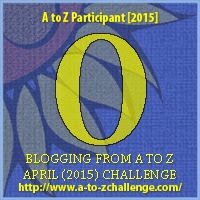
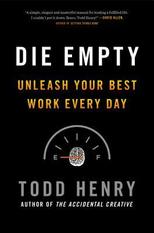
Does this concept ring true for you? Do you have any Open Loops that need to be closed?
 In Die Empty: Unleash Your Best Work Every Day, author Todd Henry explains the concept of Open Loops. “These are the unfinished projects, the halfhearted efforts, or the unreconciled relationships. They are the projects that you’re afraid to say no to, but deep down you know that you can’t commit to," he says. "These must be acted upon and made a priority, or immediately closed and put aside. If you have too many open loops in your life, it diminishes your ability to focus on the mission-critical things. You must become good at pruning your projects and commitments so that you have energy available for your most important work.”  This concept makes sense to me because I'm a big believer in “mental clutter”--those items that stay on our minds because that they're unresolved. Open Loops definitely contribute to that clutter. I once left an email in my inbox for five weeks (don't judge me!) because I couldn’t make a decision about it. My entire inbox was clear, except for that one last email, which I would see there every day. I’m pretty sure that counts as an Open Loop! Does this concept ring true for you? Do you have any Open Loops that need to be closed? 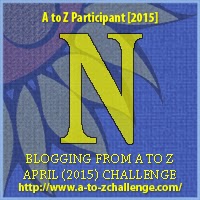 For toddlers, we teach the magic word as "please." But for adults, there is a different magic word: No. Saying no helps eliminate future undesirable tasks, freeing up time for what we'd rather be doing. 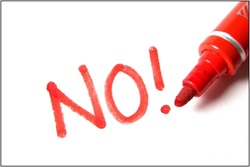 But saying no can be tough. What's the best way to approach it? In the Psychology Today article aptly entitled No Is A Complete Sentence, Dr. Cytowic advises: "The way to refuse to do something one is not obligated to do is to refuse: 'No thank you,' 'No, I’m so sorry.' 'No, I simply can’t.' 'Thank you for asking, but I’m afraid it’s impossible.' Repeat these phrases as often as necessary to wear out the attacker. It is a tactical mistake to ever give a reason for declining. . . .When you offer no excuse you imply that you’d love to participate or oblige if only it were possible." 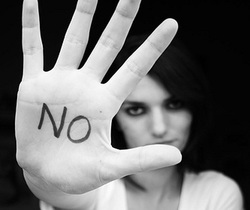 Deciding when to say no can be tricky. One of my all-time favorite quotes is from Martha Beck. "Here is the crux of the matter, the distilled essence, the only thing you need to remember: When considering whether to say yes or no, you must choose the response that feels like freedom. Period." Have you ever said yes to something you knew you would regret later? Do you have any tricks for deciding when to say no, and then actually saying it?
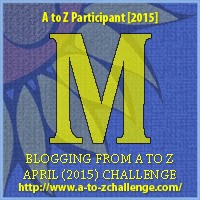 Over time, popular myths form in many fields. Productivity is no exceptions. Here are three myths about habits, multitasking, and clutter. Myth #1: It take 21 days to form a new habit.The number of days to form a habit is more variable, according to a Brain Pickings article. How long it takes depends on the difficulty of the task. Jeremy Dean, author of Making Habits, Breaking Habits, says, ". . . 21 days to form a habit is probably right, as long as all you want to do is drink a glass of water after breakfast. Anything harder is likely to take longer to become a really strong habit, and, in the case of some activities, much longer." A 2009 study in the European Journal of Social Psychology puts the number of days closer to 66, so take heart if your New Year's resolutions didn't become automatic by February. Myth #2: Multitasking means you're getting more done.Lifehacker.com interviewed Dave Crenshaw, author of the The Myth of Multitasking: How "Doing It All" Gets Nothing Done. Based on the book's title, it's pretty clear where he stands on this topic. His book does differentiate between "'background tasking'--like watching TV while exercising--and 'switchtasking,' juggling two tasks by refocusing your attention back and forth between them, and losing time and progress in the switch." It's the switchtasking we need to be wary of. (Read the complete interview here.) Beware of shiny object syndrome. As Brenda Spangrud points out, "If you spend your day stopping and restarting tasks because you are interrupted by the alert of an incoming email, text messages, phone call, or any other 'shiny object,' you will find yourself unproductive and mentally drained at the end of your day." Myth #3: Clutter means disorganization.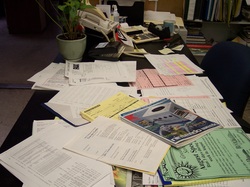 Not my desk. Not my desk. Apparently, this depends on how organized your clutter actually is. According to Lifehack.org, "If you never spend more than a minute trying to find anything in that mountain of clutter you call your office (or room or cubicle or kitchen), then leave it alone. At the same time, be honest with yourself--most people claim they can find anything they need, but when put to the test, they’re left scratching their heads." Messiness can have its creative benefits. In Saying Yes to the Mess, Penelope Green points out, "It was the overall scumminess of Alexander Fleming’s laboratory that led to his discovery of penicillin, from a moldy bloom in a petri dish he had forgotten on his desk." Do you feel your organizational style (whether neat or messy) helps or hinders your efforts to be productive?
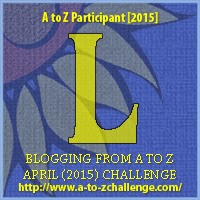 Here are two of my favorite websites that provide links to more productivity information and articles than I could ever summarize in a month. A Life Of ProductivityAfter college, Chris Bailey spent a year dedicated to productivity: reading, researching, interviewing, and experimenting. He has since extended his year's efforts, resulting in a website full of interesting blog posts. Sample articles: LifehackLifehack has a section dedicated to productivity. You can also learn about recipes, relationships, and budgeting. But spending too much time on this site might actually make you less productive! Sample articles:  Do you have a favorite website that features useful information? 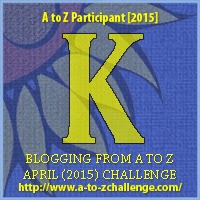 This started out as a blog post on the common ways people waste time. Several articles I read covered similar ground: Lack of planning. Procrastination. Email. Social media. Watching TV. As a matter of fact, I wasted about two hours reading articles about wasting time. Then it occurred to me: so what? Creative people *need* to waste time. We can't be productive machines, after all. “We always assume that you get more done when you’re consciously paying attention to a problem," Jonathan Schooler says in The Virtues of Daydreaming. ". . . But this is often a mistake. If you’re trying to solve a complex problem, then you need to give yourself a real break, to let the mind incubate the problem all by itself.” The Top 5 Best Ways to Kill Time Here's my non-scientific list of the top five best ways to kill time: 1. Go for a walk or a run alone. Pay attention to smells and sounds. 2. Stare out the window. Do not apologize for this if anyone notices. 3. Take a long shower. (There's some research about why this produces "Eureka" moments.) 4. Doodle with crayons or colored pencils. 5. Agatha Christie said, "The best time for planning a book is while you're doing the dishes." Vacuuming could also work. Or dusting. What's your favorite way to waste time? PS -- Just in case you're looking for a more traditional "time killer" article, here's a helpful infographic.  Top 10 Time Killers - An infographic by the team at OfficeTime Time Tracking  Today’s productivity tip is from mystery and young adult author Julie Anne Lindsey, who suggests scheduling an occasional fake “appointment” in your calendar. This protects that block of time and when the day arrives, it’s a productivity bonus! Julie explains, “Everyone wants mama's time, so sometimes it's easier to say ‘No,’ if I feel like I have a legit reason to bail on something: lunch, coffee date, volunteering etc.” Of course, once the appointment is scheduled, the only trick is to remember that it’s a fake one.  Author Julie Lindsey Author Julie Lindsey Julie admits that she once she went to her local coffee shop, forgetting who she was meeting, but not wanting to be late because she often gets together with friends there. "When no one I recognized showed up, I checked my calendar, thinking I had the wrong day. Instead, I found the appointment on my Google calendar in purple. Purple is my *wink wink* color." Of course she made a productive use of her time and did some writing before she went home. To avoid confusion, I've decided to call my own fake appointments “Lunch with Julie Lindsey.” While I wish this was possible, she lives several states away. But go ahead, schedule your fake lunch with Julie today! She wants everyone to find an extra hour or two in their schedule.
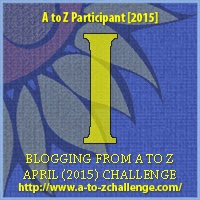 I loved The 7 Habits of Highly Effective People and First Things First, two personal productivity books by Stephen Covey. One of the main concepts in these books is that the order we do our tasks counts--important things should come first. Here's a brief video (under four minutes) that effectively illustrates the concept. (I won't be upset if you skip the video to do important things.) 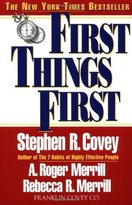 Do you regularly do the most important things first? It's a concept I understand but still struggle to implement. PS -- I love that the guy doesn't spill the sand. I would definitely have made a mess. :)  People are generally familiar with the downside of procrastination. Another game of Solitaire or a Facebook status update is not going to help get the "real" work done. But I'm pleased to report that there are some positives to procrastination, too, depending on how you approach it. While passive procrastination (sitting around endlessly) is generally bad, active procrastination can be a good thing. According to Frank Partnoy, the author of Wait: The Art and Science of Delay, this type of procrastination "means you realize that you are unduly delaying mowing the lawn or cleaning your closet, but you are doing something that is more valuable instead." This type of procrastination also allows you to gather the maximum amount of information before making a decision, and some people do their work best under pressure.  Cat Nap Power! (Not my cat.) Cat Nap Power! (Not my cat.) An article by Dr. Boyes in Psychology Today, agrees that it's how you procrastinate that counts. Using procrastination to strengthen a relationship, mentally regroup, or accomplish smaller, repetitive tasks can be an energizing use of time. Napping can also be a beneficial way to procrastinate. ". . . Napping resets your emotional resources," Dr. Boyes says. "You may find that when you wake up, you feel more ready to take on a task that felt too daunting just before you put your head down." I definitely believe in the power of the nap, and I like to declutter when I'm creatively stuck. Do you have a favorite positive way of procrastinating?
 While Getting Things Done: The Art of Stress-Free Productivity by David Allen seems more geared toward business-oriented people, it still holds lots of helpful advice for creative people and the general population as well. Here are three of my favorite concepts from Allen's book:  Try breaking your to-dos into types of actions instead of by project. For example, phone calls get listed together, as do errands, computer tasks, and things to read. The benefit is that this approach allows you to complete to-dos by circumstance and energy level as well as priority. Waiting for a friend who's late for lunch? Tackle some reading material. Feeling a bit tired but have some quiet time to work? Trying making phone calls. And if you're doing one errand, you can check your list to easily see what else you can logistically take care of while you're out.  The concept of a "Someday/Maybe" list. This is a place to capture things like possible goals, ideas for future hobbies, and books you might like to read. Don't clutter your regular to-do list with these items. Store them on a separate list and check it periodically.  The "Two Minute Rule." Allen says, “If the next action can be done in two minutes or less, do it when you first pick the item up.” The idea is that we waste time tracking a small task on our to-do list, then copying it to the next to-do list, then deciding after reviewing the list for the fifth time to take care of the task next week instead. In all the time it takes to manage the item, we could have actually completed the task! By the way, "two minutes" is a general guideline--it might be more of a five minute rule if you have the flexibility. 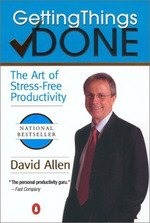 Do any of these concepts resonate with you? Let me know what you think. Tomorrow's post: How to Procrastinate!  Many times when we are trying to be productive, we become distracted by other things. The incoming emails. The ringing phone. The barking dogs. But focusing with "intentionality," according to a recent article at Entrepreneur.com, can produce tremendous results. Pick a meaningful concrete task (no daydreaming!) and focus on it for fifteen minutes. Do this every day. (Or multiple times a day.) Then check the results.  Focus and flow Focus and flow One thing many people find about focusing is that if they get into a flow, they can get more work done effectively. Writing one blog post might take a half an hour. But continued focus might result in four done in an hour. In other words, there is an efficiency that starts to take over when we immerse ourselves in a task (and ignore the pets). Do you ever make a concerted effort to disregard everything else and focus? Let me know in the comments. In the meantime, I'll be tending to the barking dogs. |
JOIN NOW!
Sign up for Yvonne's newsletter for exclusive content, book news, and other occasional author goodies. Archives
March 2025
Categories
All
|